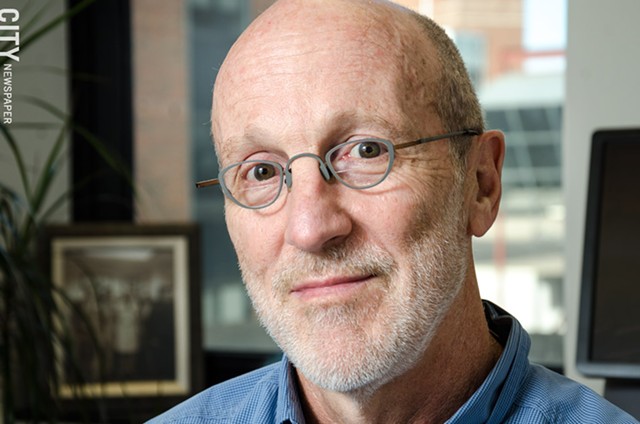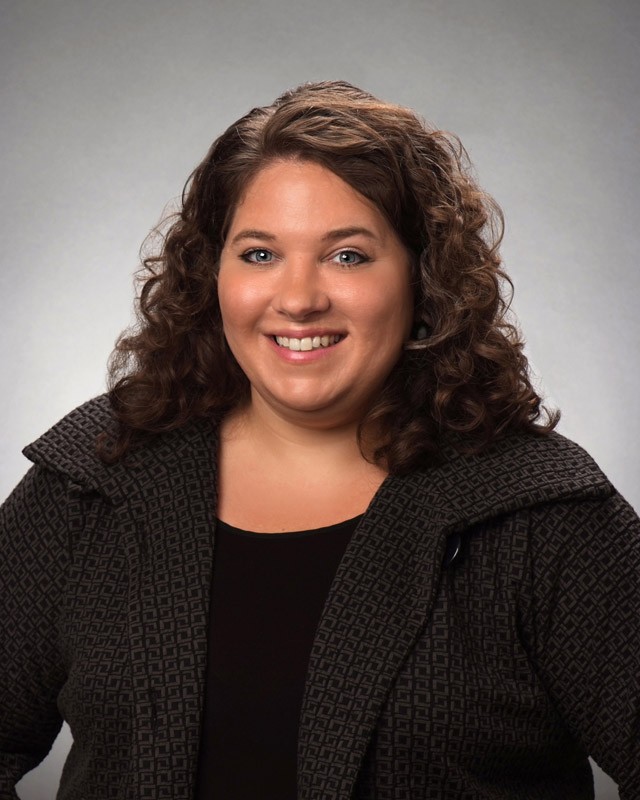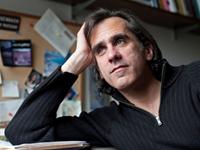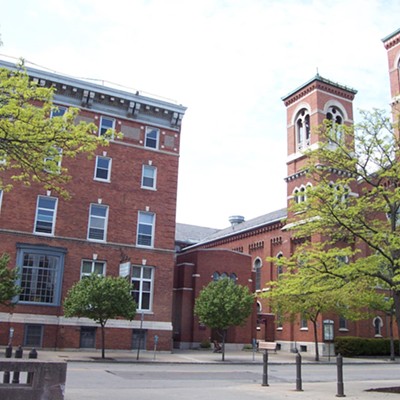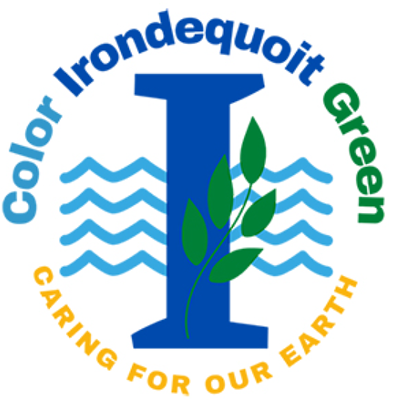
[
{
"name": "500x250 Ad",
"insertPoint": "5",
"component": "15667920",
"parentWrapperClass": "",
"requiredCountToDisplay": "1"
}
]
Susan Rahn has been in a brutal fight with stage 4 breast cancer since August 2013. It had already metastasized by the time she was diagnosed.
Rahn first went to the doctor for what she thought was a kidney stone, since she was experiencing strange back pain. Doctors found a lesion on her rib and a tumor on her spine.
Even though Rahn received a clean mammogram only months earlier, further investigation confirmed that she had breast cancer. It had evaded detection as it sometimes does with women who have dense breast tissue. The cancer is terminal, Rahn says.
Rahn was only months into her second marriage when she was diagnosed. She is also a mother to Adam, 17, and stepmother to Max, 18, and Sammy, 15.
Rahn has undergone radiation to the spine and rib. She's had two surgeries and is on her fourth line of drug treatment. In the last few months, she's lost about 35 pounds, she experiences nausea and difficulty eating, and she's easily fatigued. And she's worried about an upcoming meeting with her doctor concerning some possible new developments in her lymph nodes.
"My biggest concern is when they do find something it's going to be like an 'Oh shit!' moment," Rahn says. "It's very important to me, and my doctors are very aware of this, that I need to be here for my son."
Adam is the only child who lives with Rahn and her husband, Jeff. He will graduate from Bishop Kearney next year.
"I need to be there for that," Rahn says.
Rahn is currently on a drug treatment she calls "chemo-light" that works on a 21-day cycle, leaving her vulnerable to colds, fevers, and infections.
"Eventually it [the cancer] figures out a way around whatever treatment you're on and once that treatment fails, you go on to something else," she says. "That's what metastatic cancer is about. You go on to something else and the treatments get harsher and stronger."
But over time, the treatments for some patients can make them feel worse than the disease, which is why Rahn says that she supports earlier end-of-life intervention through palliative care and hospice. But more than that, she supports an individual's decision to seek medical aid or physician assistance in dying.
She says that she should have the right to make that decision at the time of her choosing: something that she has blogged about on her site stickit2stage4.com.
"Metastatic breast cancer has a median lifespan of 36 months," she says. "August is 36 months for me."
Like many people, Rahn has witnessed others go through the dying process, including women she has known with breast cancer.
"I have watched these women suffer, suffer, and suffer," she says. She doesn't want her family, particularly her son, Adam, whom she raised mostly on her own, to witness that, she says. She doesn't want his last days with her marred by watching her struggle with pain while losing control of her bodily functions, she says.
"How can I do that to him?" she says.
Rahn is hardly alone in her fears or her strong views about much-needed improvements in end-of-life care. She says that she hopes that New York joins Oregon, Washington, Montana, Vermont, and California, and becomes the sixth state to allow physician assistance in dying. The practice is also legal in Canada.
Palliative care and hospice, for many health care professionals who specialize in end-of-life care, are just a partial view of a changing perspective on how we experience terminal illness. Medical aid in dying, though still extremely controversial, is getting a more positive reception, particularly after Brittany Maynard's quite public decision to end her life gained international attention.
The 29-year-old woman with terminal brain cancer moved to Oregon in 2014 where she could legally receive the medication needed to end her life under that state's Death with Dignity Act.
Proponents say that palliative care and hospice, in many states, particularly in New York, are offered too late for patients, causing them to suffer needlessly. And they say that medical assistance in dying, though studies show that most patients don't resort to it, should at least be an option for the few patients who want it.
Advocates are working ardently in some states, including New York, both legislatively and through the court system to allow terminally ill patients to choose how and when they will die.
The issue has legions of determined and thoughtful critics up in arms, however, and raises many difficult and challenging questions on both sides of the debate. For instance, is there a difference between medically- or physician-assisted death and suicide? What is a physician's ethical responsibility to the dying? Is allowing someone to linger in agonizing pain or in a heavily sedated fog for days, and sometimes weeks and months, humane medical care?
And what do doctors mean when they refer to a "good death" compared to a bad one, and why should we care?
Dr. Timothy Quill has been trying to address those questions for years, and is an author and frequent speaker on end-of-life care. He begins his book "A Midwife through the Dying Process" with a line from T.S. Eliot's poem, East Coker: In my beginning is my end.
The poem has been described as Eliot's search for the divine, and it aptly sets the tone for Quill's passion to help people experience a peaceful death or what he calls a good death, something that he says is person-specific.
Quill is a physician at the University of Rochester and colleagues often refer to him as a pioneer in palliative care. He writes: "Death seems antithetical to modern medicine — no longer a natural and inevitable part of the life cycle, but a medical failure to be fought off, ignored, and minimized. The dark side of this desperate battle has patients spending their last days in the intensive care units of hospitals, tubes inserted into every body part, vainly trying to forestall the inevitable. No one wants to die, but when we really have to, there must be a better way."
Quill began his career in Rochester in the 1980's as a medical director for hospice care. He is committed to expanding understanding of what the process of dying involves, and more importantly, what it means to patients who are experiencing it.
Quill was at the center of a firestorm in the early 1990's after he disclosed in the New England Journal of Medicine that he prescribed the medication for a patient to end her life. He had been treating a leukemia patient in her 40's, identifying her only as "Diane."
"When I was trying to decide whether to do it with my patient Diane that I wrote about, I talked to many of my colleagues and I said, 'Look, I've got this patient who is asking me to do this,'" Quill says. "'Have you guys ever done this?' And they said, 'Yes, once or twice over the course of my career.'"
Authorities at the time chose not to prosecute him. Still, Quill's disclosure provoked a national discussion about something that many families, terminally ill patients, and their physicians faced.
Quill says that society's willingness to engage in meaningful conversation about end-of-life care has improved.
"Americans are making progress in their ability to talk openly and experience the realities that come with death and dying," he says. "We're beyond the death panels talk and Sarah Palin stuff."
But we still have a long way to go, he says.
Palliative care, hospice, and medical aid in dying are more or less three strands to the end-of-life braid. Quill describes them as stages in terms of level of care, beginning with palliative care, which essentially uses a team approach to address the needs of the terminally ill, even though the patients may still be receiving aggressive treatment.
New York lags woefully behind in its use of palliative care and hospice, critics say.
"That people who are sick should know about palliative care is a no-brainer," Quill says. "If they're suffering a lot, the first question is, 'Are they getting the best pain management, and do they know what their options are in terms of treatment?' That is just good medicine, or it should be."
The most sophisticated procedure in palliative care is the family meeting, he says.
"Families are very complicated," Quill says. "You want to get a consensus, and that's not always easy to do because families are imperfect."
But ultimately the decision belongs to the patient, and Quill stresses that one of the main reasons that palliative care is so important is that it often allows the medical team to work with patients while they still have decision-making capacity.
Quill starts by talking to patients about the deaths they've witnessed and what they're most fearful of, because these "bad deaths," as he calls them, leave a lasting impression.
"If I can get people to talk about those things and if I can shut up and listen, I can reassure them," he says. "Some people will say something like, 'I had a friend who was in such agony because the doctors were afraid of giving him too much pain medication.' I'll say, 'I will give you as much pain medication as you need. That's not going to be a deal-breaker at all.' Or there are people who have seen someone suffering because they were confused and out of their mind, and they'll say, 'That's more than I want to go through.'"
Quill says that the set of established options that physicians discuss with patients often starts with pain relief.
"If the problem is pain or shortness of breath, we can give them as much morphine or the equivalent as they need even if it makes them sleepy," he says.
The second option is whether or not patients want to re-evaluate the life-support systems that they are on, Quill says.
"If they are on a ventilator, they can stop," he says. "If they are on dialysis, they can stop, and there may be others. If they stop these systems, they'll die pretty quickly. We can let them know what those choices are and we assure them that we can keep them comfortable."
The first two options have fairly widespread social and political acceptance, Quill says. But the next three become progressively grayer from a legal standpoint, and more contentious, he says.
Sedation is the next option and Quill says that patients can be sedated to the point where they are no longer conscious, if needed. People who fear suffering from severe forms of dementia often ask for this, he says.
The fourth option is to stop eating and drinking.
"It's a little unusual and it doesn't sit very well with some folks when you first bring it up, but for some people who don't have any good options, it does provide an escape from extreme suffering."
The fifth and most controversial option is not legal in New York State. In this instance, the physician provides medication that people can take immediately or at a time of their choosing to end their life.
But critics of medical or physician assistance in dying say that the practice is morally and ethically wrong on multiple fronts. They say that when physicians help patients die, they are flagrantly ignoring the most basic principle in medicine: "Do no harm."
And they say that advocates purposely avoid using the phrase "physician-assisted suicide" to shift the public's attention away from what's really happening.
They also say that the practice opens the door to unethical behavior that puts the elderly and the most vulnerable in society at risk from family members and caretakers who might want to end a person's life before the patient's medical care drains the family's resources.
And many people of faith, particularly Catholics, say that physician- assisted dying is against Church doctrine, which forbids suicide just as it does abortion.
Rahn, who receives palliative care, says that she has no patience for people who pontificate and moralize about something that they don't understand and haven't experienced.
"It's not suicide," she says. She doesn't want to die, but she's also a realist, she says.
"I was born and raised Catholic," Rahn says. "I raised my son Catholic. I don't believe that my God would want me to have a painful, suffering death. For those who think it's wrong, they don't have to do it. My death won't affect the person sitting next to me."
Some of the strongest resistance comes from people in the disabilities community, who say that they've been fighting for decades to be recognized as valuable participants in society. Physician assistance in dying could lead to a dystopian process of elimination of the least fit in society, designer babies, and highly selective care for those living with physical or mental disabilities, they say.
And even many medical professionals say that advocates of assistance in dying undermine hope and the potential for the patient to recover, or at the very least, live longer.
"I'm glad to encourage anybody's hope," Quill says. "My view is you hope for a miracle, but at the same time that you hope for it, you get prepared in case you don't get what you're hoping for."
David Leven is an attorney and former resident of Rochester who now lives in New York City. He's also a staunch advocate for medical assistance in dying. He says that the medical community waits too long to offer palliative care and hospice.
Leven says that New York's Palliative Care Information Act requires doctors, once they've made a terminal diagnosis, to provide the patient with information and counselling on palliative care and end-of-life options.
But many doctors are reluctant to make the diagnosis even though in New York, patients must receive a prognosis of six months or less to live before they can receive hospice care, he says.
Patients are too often shuffled into hospice a day or two, sometimes hours, before dying, when doctors should be helping patients and family members understand the benefits of palliative care and earlier hospice care, Leven says.
Leven says that he hopes that a legal case involving the constitutionality of physician assistance in dying will be taken up soon by the state Court of Appeals. It was dismissed twice by the lower courts.
And there is a bill in the New York State Legislature to make physician assistance in dying legal.
Corinne Carey is the New York State campaign director for Compassion and Choices, a national nonprofit dedicated to improving patient rights and choices concerning end-of-life care. She says that the New York bill is modeled after Oregon's Death with Dignity Act.
"There is bipartisan support for it," she says. The bill passed the Assembly Health Committee in the legislature's last session and will have to be reintroduced in the new session, which begins in January 2017.
"The patient has to take the first step in requesting this," Carey says. "The doctor can't suggest that this is the right option. A written request has to be made and witnessed by two people, and another doctor has to confirm that the person has indeed a terminal illness and less than six months to live."
What's been learned from close observation of the Oregon law, which was enacted in 1996, is that few patients actually use it, Carey says.
"Only a small percentage of patients even request the medication, and those who are approved for it are an even smaller subset, so we're really talking about less than .2 percent of all of the deaths in Oregon," she says.
But the law does two important things, she says. It puts the decision in the hands of terminally ill patients, who may find relief just knowing that the option is available if they need it, Carey says. And it brings the process out of the shadows, she says.
The UR's Quill says that one of the most compelling reasons to pass the bill is the fact that physicians are already helping people die. While it may not be commonplace, it's not rare, either, he says.
"When you think about assistance in dying in New York State, there's no documentation," Quill says. "We don't know what is really going on. It's done under the radar."
Speaking of...
Latest in News
More by Tim Louis Macaluso
-

RCSD financial crisis builds
Sep 23, 2019 -
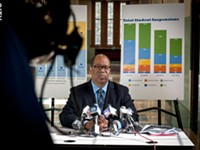
RCSD facing spending concerns
Sep 20, 2019 -

Education forum tomorrow night for downtown residents
Sep 17, 2019 - More »

